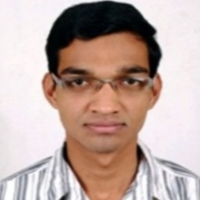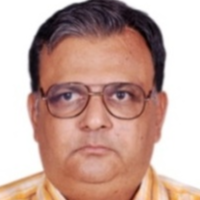International Journal of Information Technology and Computer Science (IJITCS)
IJITCS Vol. 6, No. 6, 8 May 2014
Cover page and Table of Contents: PDF (size: 411KB)
Time-Delay Neural Network for Smart MIMO Channel Estimation in Downlink 4G-LTEAdvance System
Full Text (PDF, 411KB), PP.1-8
Views: 0 Downloads: 0
Author(s)
Index Terms
LTE-A, OFDM-MIMO, Back-Propagation, Feed-forward neural network (FFNN), Cascade-forward neural network (CFNN), Time-Delay neural network (TDNN)
Abstract
Long-Term Evolution (LTE) is the next generation of current mobile telecommunication networks. LTE has a new flat radio-network architecture and significant increase in spectrum efficiency. In this paper, main focus on throughput performance analysis of robust MIMO channel estimators for Downlink Long Term Evolution-Advance (DL LTE-A)-4G system using three Artificial Neural Networks: Feed-forward neural network (FFNN), Cascade-forward neural network (CFNN) and Time-Delay neural network (TDNN) are adopted to train the constructed neural networks’ models separately using Back-Propagation Algorithm. The methods use the information received by the received reference symbols to estimate the total frequency response of the channel in two important phases. In the first phase, the proposed ANN based method learns to adapt to the channel variations, and in the second phase, it estimates the MIMO channel matrix and try to improve throughput of LTE. The performance of the estimation methods is evaluated by simulations in Vienna LTE-A DL Link Level Simulator. Performance of the proposed channel estimator, Time-Delay neural network (TDNN) is compared with traditional Least Square (LS) algorithm and ANN based other estimators for Closed Loop Spatial Multiplexing (CLSM) - Single User Multi-input Multi-output (MIMO-2×2 and 4×4) in terms of throughput. Simulation result shows TDNN gives better performance than other ANN based estimations methods and LS.
Cite This Paper
Nirmalkumar S. Reshamwala, Pooja S. Suratia, Satish K. Shah, "Time-Delay Neural Network for Smart MIMO Channel Estimation in Downlink 4G-LTE-Advance System", International Journal of Information Technology and Computer Science(IJITCS), vol.6, no.6, pp.1-8, 2014. DOI:10.5815/ijitcs.2014.06.01
Reference
[1]Armando Ubisse, Neco Ventura, “Modeling a Link Level Simulator for Long Term Evolution Uplink” , Department of Electrical Engineering University of Cape Town, Communications Research Group Cape Town, South Africa, 2011.
[2]3GPP TR 36.913, “3GPP; Technical Specification Group Radio Access Network. Requirements for further advancements for Evolved Universal Terrestrial Radio Access (E-UTRA),” v.9.0.0, December 2009.
[3]M. Rumney, “LTE and the Evolution to 4G Wireless: Design and Measurement Challenges”, Agilent Technologies Publication, 2009.
[4]David Martin-Sacristan, Jose F. Monserrat, Jorge Cabrejas-Penuelas, Daniel Calabuig, Salvador Garrigas, and Narcis Cardona, “3GPP LTE and LTE-Advanced”, January 2009.
[5]Jeanette Wannstrom, "LTE-Advanced", May 2012 http://www.3gpp.org/LTE-Advanced
[6]Nirmalkumar S. Reshamwala, Pooja S. Suratia, Satish K. Shah, "Study of ANN Configuration on Performance of Smart MIMO Channel Estimation for Downlink LTE-Advanced System", IJCNIS, vol.5, no.11, pp.27-35,2013. DOI: 10.5815/ijcnis.2013.11.04.
[7]A. Omri, R. Bouallegue, R. Hamila and M. Hasna, “Estimation of highly selective channels for downlink LTE MIMO-OFDM system by a robust neural network”, International Journal of Wireless & Mobile Networks (IJWMN), Vol.2, No. 1 (2011), pp. 31 – 38.
[8]Barnali Dey, Awanish Kumar, Prashant Kumar, Sanjit Lal, Naveen Kumar, Bikash Sharma, “Channel Estimation using LS and MMSE Algorithm”, International Symposium on Devices MEMS, Intelligent Systems & Communication (ISDMISC) 2011.
[9]Saqib Saleem, “Channel Estimation using Adaptive Filtering for LTE-Advanced”, International Journal of Computer Science (IJCSI) Issues, Vol. 8, Issue 3, No. 2, May 2011.
[10]Farooq Khan, “LTE for 4G Mobile Broadband Air Interface Technologies and Performance”, Telecom R&D Center Samsung Telecommunications, America, Cambridge University Press 2009.
[11]3GPP TS 36.211, Evolved Universal Terrestrial Radio Access (EUTRA), “Physical Channels and Modulation”, (Release 11).
[12]3GPP TS 36.212, Evolved Universal Terrestrial Radio Access (EUTRA), “Multiplexing and channel coding”, (Release 11).
[13]Satish K. Shah, Pooja S. Suratia, Nirmalkumar S. Reshamwala, “Comparative Performance Analysis of ANN Based MIMO Channel Estimation for downlink LTE- Advanced System employing Genetic Algorithm”, proceeding of International Conference On Soft Computing and Software Engineering [SCSE'13].
[14]Nirmalkumar S. Reshamwala, Pooja S. Suratia, Satish K. Shah, “Performance Analysis of ANN Based MIMO Channel Estimation for downlink LTE-Advanced System”, National Level Paper Contest called “Soft Computing for processing, Security Networking and Communication: (SCPSNC_2013), IETE Vadodara and Faculty of Technology, Electrical Engineering Department, M S University of Baroda, Vadodara, 20th January, 2013.
[15][Online].Available: http://www.nt.tuwien.ac.at/about-us/staff/josep-colom-ikuno/lte-simulators/
[16]Albert Serra Pagès, “A Long Term Evolution Link Level Simulator”, Universitat Politècnica de Catalunya February, 2009.
[17]LTE World, The Seven Modes of MIMO in LTE, [online]. Available: http://lteworld.org/whitepaper/seven-modes-mimo-lte.
[18]C. Mehlfuhrer, J. Colom Ikuno, M. Simko, S. Schwarz, M. Wrulich, M. Rupp, “The Vienna LTE Simulators - Enabling Reproducibility in Wireless Communications Research”, EURASIP Journal on Advances in Signal Processing, Vol. 2011, pages 1 - 13, 2011
[19]3GPP Document TS 36.213, Evolved Universal Terrestrial Radio Access (EUTRA), “Physical Layer Procedure”, (release 11).
[20]ITU-R M.1225 International Telecommunication Union, ‘Guidelines for evaluation of radio transmission technologies for IMT-2000’, 1997.
[21]Ericsson, Nokia, Motorola, and Rohde & Schwarz, ‘R4-070572: Proposal for LTE Channel Models’, www. gpp.org, 3GPP TSG RAN WG4, meeting 43, Kobe, Japan, May 2007.
[22]Nirmalkumar S. Reshamwala, “Application of Soft Computing for Channel Estimation and Equalization in LTE”, Faculty of Technology and Engineering, The Maharaja Sayajirao University of Baroda, Vadodara, Gujarat, India, June-2013.
[23]Martin G. Reese, “Application of a time-delay neural network to promoter annotation in the Drosophila melanogaster genome”, Computers and Chemistry 26 (8th May-2001) 51–56, www.elsevier.com/locate/compchem.


